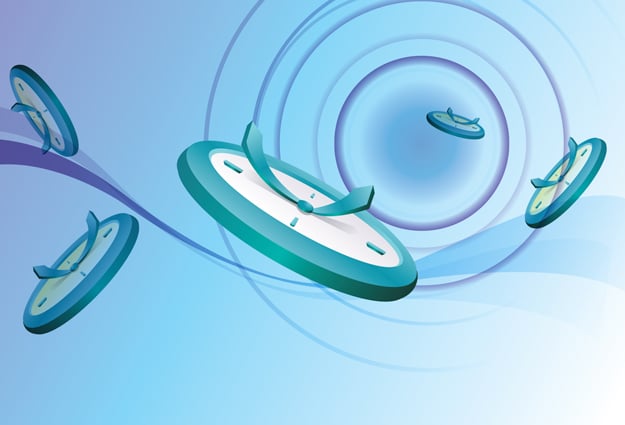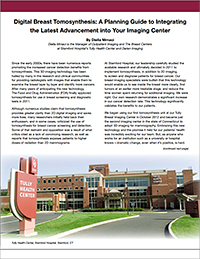
Editor's Note: This is the third installment of a five-part series adapted from the author's paper "Digital Breast Tomosynthesis: A Planning Guide to Implementing the Latest Advancement into Your Imaging Center." Links to parts 1 & 2 , in addition to the full paper, can be found at the bottom of this post.
Background:
We began using digital breast tomosynthesis in October 2012 - just the the second imaging center at the time to adopt 3D imaging for mammography in the entire state of Connecticut. As anyone who works for an institution like a university or hospital knows - dramatic change, even when it's positive, is hard. We faced a variety of of challenges integrating this technology into our facility and our workflow and feel the lessons we learned can benefit others as they consider implementing digital breast tomosynthesis into their hospital or practice.
Stress Levels Go Through the Roof
Exams had to be cut back down from 20 to 15 minutes, so we could still accommodate volume and maintain availability to our patients.
Each technologist has their own way of establishing rapport with their patients, but they all now had to adapt and process everything quicker. Not just our regularly scheduled exams, but also the unexpected - walk-ins, emergency add-on procedures, equipment issues, etc.,that all have the potential to occur on a daily basis and directly impact workflow.
Understandably, the stress levels of our technologists went through the roof during this period of accelerated change.
We revised our workflow several times. We created separate screening and diagnostic schedules, we assigned some technologists tot he screening room, others to the diagnostic room and had the rest pick up the slack as needed - acting as navigators answering patient questions and helping guide them through the process.
With all the changes Tully endured to implement tomosynthesis, we decided to keep our skin marking protocol intact.
With so much more tissue detail visible on the 3D image, we found that skin markers were still extremely useful in mapping out areas on the breast to help identify or rule out some questionable findings - especially with patients who have had had previous breast surgeries. In standard digital mammography (2D imaging), distortion from older scars tend to be less visible; however, in 3D tomosynthesis, architectural distortion from older surgeries is very noticeable, causing questions and concern.
Marking excisional sites with scar markers helps to clarify those findings as related to older surgeries and helps reduce the possibility of additional imaging and potentially, even some biopsies.
Keeping our same skin marking protocol helped alleviate some of the stresses and workflow issues associated with our transitions to 3D breast imaging.
Eventually we fine-tuned our workflow to the point where we were back on track and better able to manage our standard of 60 patients per day. We hit that milestone at about the 3 month mark after implementation and no sooner did we accomplish that, things were about to get even more interesting!
Next Installment: The Straw that Broke the Camel's Back
Read Parts 1 & 2:
Click on the thumbnail below to read the full paper:

Diella Mrnaci

